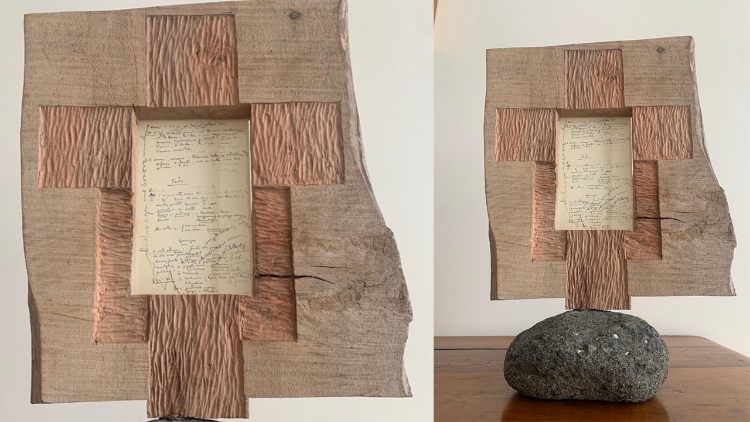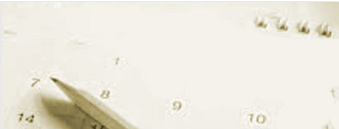
Pope John Paul I: ‘Beatification overcomes fake news about his death’
By Salvatore Cernuzio
He has gone down in history as the Pope of the 34-day pontificate, as the "Smiling Pope" or, even worse, as the Pope whose sudden death led to numerous conspiracy theories.
The imminent beatification helps to better know and even discover the imposing figure of John Paul I, as well as his teaching, spiritual depth, and theological learning.
The Holy See Press Office held a press conference on Friday, which saw Cardinal Beniamino Stella, the postulator of his cause, joined by Stefania Falasca, the deputy postulator; Lina Petri, his niece; Sister Margherita Marin, the first person to find his lifeless body; and, Fr. Juan José Dabusti, an Argentine priest who prayed for the healing of the little girl miraculously cured by the soon-to-be Blessed John Paul I.
Granddaughter Lina: "He helped Jews during the war"
The press conference offered the opportunity for two women whom Albino Luciani knew well to share their memories of the man who would become Pope John Paul I.
Sister Margherita Marin, a nun of the Congregation of the Sisters of the Child Mary, was an assistant at the papal apartment, when she and Sister Vincenza Taffarel found the lifeless body of the Pope on 28 September 1978.
His niece, Lina Petri, daughter of his sister Antonia, recalled the postcards sent from Rome "from her uncle," as well as his advice, their chats about St. Augustine and St. Thomas.
Ms. Petri also spoke about a phone call her uncle the Pope had with her sister, in which he mentioned the meeting in Belluno between Hitler and Mussolini and said in dialect, "We are in the hands of two madmen!"
Ms. Petri also spoke about her uncle's assistance to people in distress during the war, especially Jews.
Cardinal Stella: "His message important for today's world"
Cardinal Beniamino Stella shared his thoughts on the cause for beatification, saying that Pope Benedict XVI gave a deposition about his predecessor.
This, he noted, was the first time in which “a Pope has given de visu testimony about another Pope.”
The cause for beatification, which has received impetus from the Church in Brazil and as far afield as Argentina, has moved slowly. However, it is precisely the slow pace which has allowed for painstaking work.
"The cause of Pope John Paul I," stressed Cardinal Stella, "was neither longer than others, nor shorter and easier than others. It involved in-depth research without discounts: accurate, conscientious, scrupulous, conducted according to the historical-critical method, and based on a serious investigation of the archival sources, a focused bibliographic research and a rich testimonial panorama."
Piecing together history
It was precisely the acquisition of the sources and an impressive amount of documents, now collected by the John Paul I Vatican Foundation, that enabled the "analytical analysis" which allowed for a proper historical reconstruction, said Ms. Falasca.
"On the level of historiographical interest," stressed the deputy postulator and vice president of the Vatican foundation, "John Paul I has had a modest space. His work, personality and thought have been little visited." T
he cause for canonization has therefore rendered "a service to historical truth, acquiring all the documentation to really talk about John Paul I." The goal, above all, she said, was to “completely reconstruct an itinerary of which the pontificate was the tip of an iceberg."
Thanks to scientific research, said Ms. Falasca, it was possible to upend the fake news about death by poisoning that "persisted for a long time."
She called this conspiracy theory a lie which “has engulfed for so many years the consistency and magisterial caliber of this man and this Pope."
"It is incredible that 44 years after his death we are still wondering why he was murdered," she exclaimed, saying the sources helped overcome the false narrative.
Reports and medical records
In the case of Luciani's death, the postulators spoke of acquiring medical records, court depositions, doctors’ reports, including those of the pontifical primary physician, Dr. Mario Fontana and Dr. Renato Buzzonetti – who had drawn up the cause of death and clinical status, medical history, and provided for the preservation of the late Pope’s body.
"Some people ask: ‘why wasn't an autopsy performed?’ There was no law then, since John Paul II introduced it in 1983. Also, an autopsy is requested on suspicion, and Fontana and Buzzonetti, in their death report, wrote that they did not think it was necessary," Falasca said.
The viewing of the corpse, the description of the stains that made it possible to re-establish the time of death, led the two professionals to decree Luciani's as "sudden death." And "when you write like that in forensics, it's always natural death," the journalist stressed, "It was a heart attack."
Pope John Paul I himself, who enjoyed "good health although with some past history," had warnings of a heart attack the night before through a hint of chest pain which he mistook for rib-cage pain.
He did not give it too much thought, and went to bed greeting the sisters as he did every night and telling Sister Margaret his last sentence, "Tomorrow we will see each other, if the Lord still wishes it, and we will celebrate Mass together."
Ironed shirts
Speaking in a feeble voice, the nun reported these strong memories, along with short but significant anecdotes that restore the image of the man Albino Luciani.
For example, one time in the afternoon, seeing the nun ironing, the Pope, who was going back and forth with papers in his hand, said, "Nun, I make you work so hard.... But don't iron that shirt so well because it's hot, I sweat, and I need to change them often. Iron only the collar and cuffs, since the rest can't be seen, you know."
A yellowed sheet of paper with notes on the theological virtues
John Paul I often walked about with sheets of paper in hand, and he was found dead with one clutched in this hand.
The paper contained notes on the virtue of prudence at the center of the catechesis of the following Wednesday's General Audience. In the Foundation's archives – which cover the period from 1929 to 1978 – diaries, notepads, notes, and transcripts have been recovered that show how everything Luciani said "was never left up to improvisation."
From among these notes was taken the relic which will be presented to Pope Francis on Sunday: not a fragment of bone or a body part as is usually the case, but a white piece of paper, yellowed by time, about ten centimeters in size, in which the Pope wrote an outline for a spiritual reflection on the three theological virtues that recalls the magisterium of the General Audiences.
"It is the emblem of his entire spirituality and his search for the seven lamps of sanctification," said Ms. Stefania Falasca. “It was the outline of his pontificate."
Blessed’s portrait is work of a Chinese artist
St. Peter's Square on Sunday will display the portrait painted by Chinese artist Yan Zhang, the making of which was shown in an evocative video by journalist Teresa Tseng.
The film was shown in the Holy See Press Office, along with a video sent from Buenos Aires by young woman, Candela Giarda, who received the miracle which cleared the path for John Paul I’s beatification, along with her mother, Roxana Sosa, who were unable to come to Rome because of a fracture in the girl's foot.
Fr. Dabusti: " Holy Spirit suggested I pray for the sick child"
The story of the young girl, who was then suffering from a malignant refractory epilepsy, and her miraculous healing was told by Father Juan José Dabusti.
The Argentine priest recounted how he was faced with her mother’s desperation, as she called him to her daughter's bedside after doctors told her she would not live through the night.
He suggested they should pray together to Albino Luciani.
"Looking at her in that condition, I was inspired to turn to John Paul I to ask for the healing of her child, and together with her, and some nurses present, I prayed to him," the priest recounted. "Until that moment I had never prayed to John Paul I for a healing. Why did I propose to Roxana to pray there for Luciani to intercede for Candela's healing? I don't know. It was the Holy Spirit."
Thank you for reading our article. You can keep up-to-date by subscribing to our daily newsletter. Just click here


.jpg/_jcr_content/renditions/cq5dam.thumbnail.cropped.750.422.jpeg)









